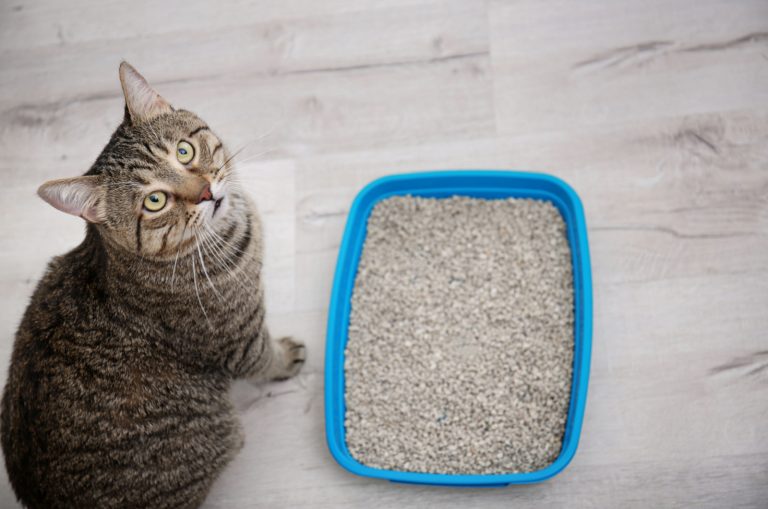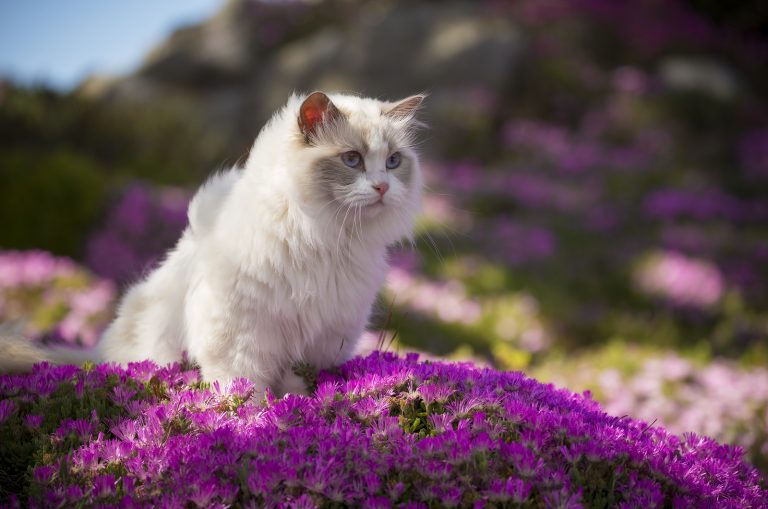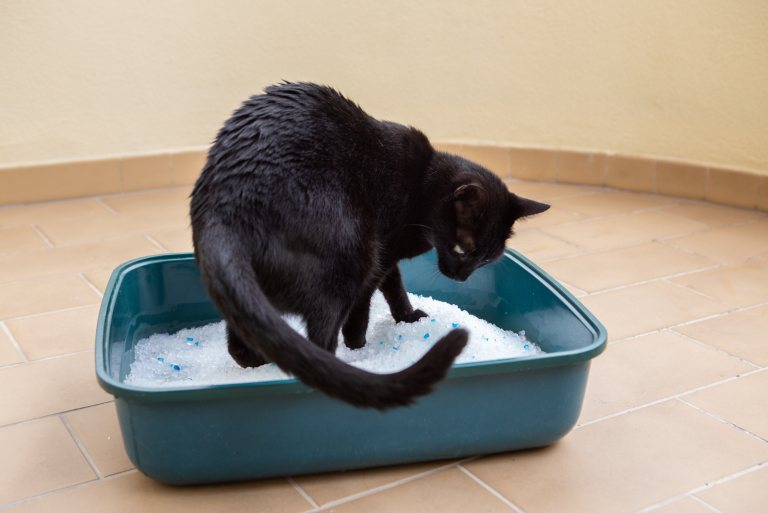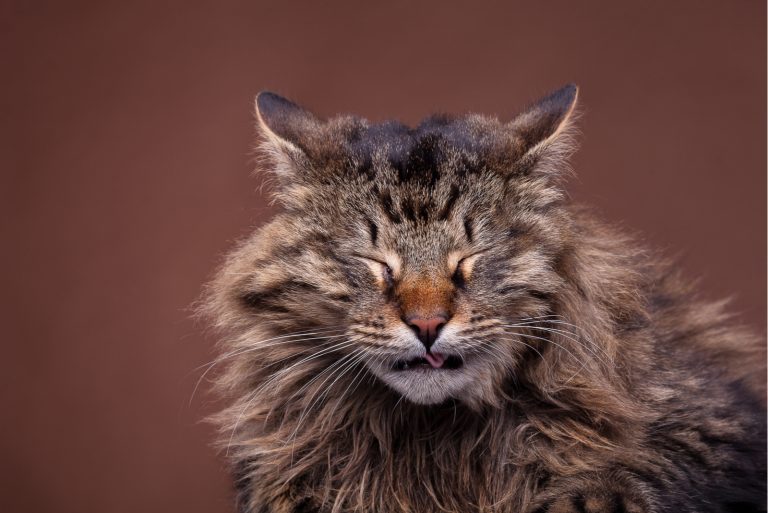How Much Litter To Put In Litter Box? A Complete Guide
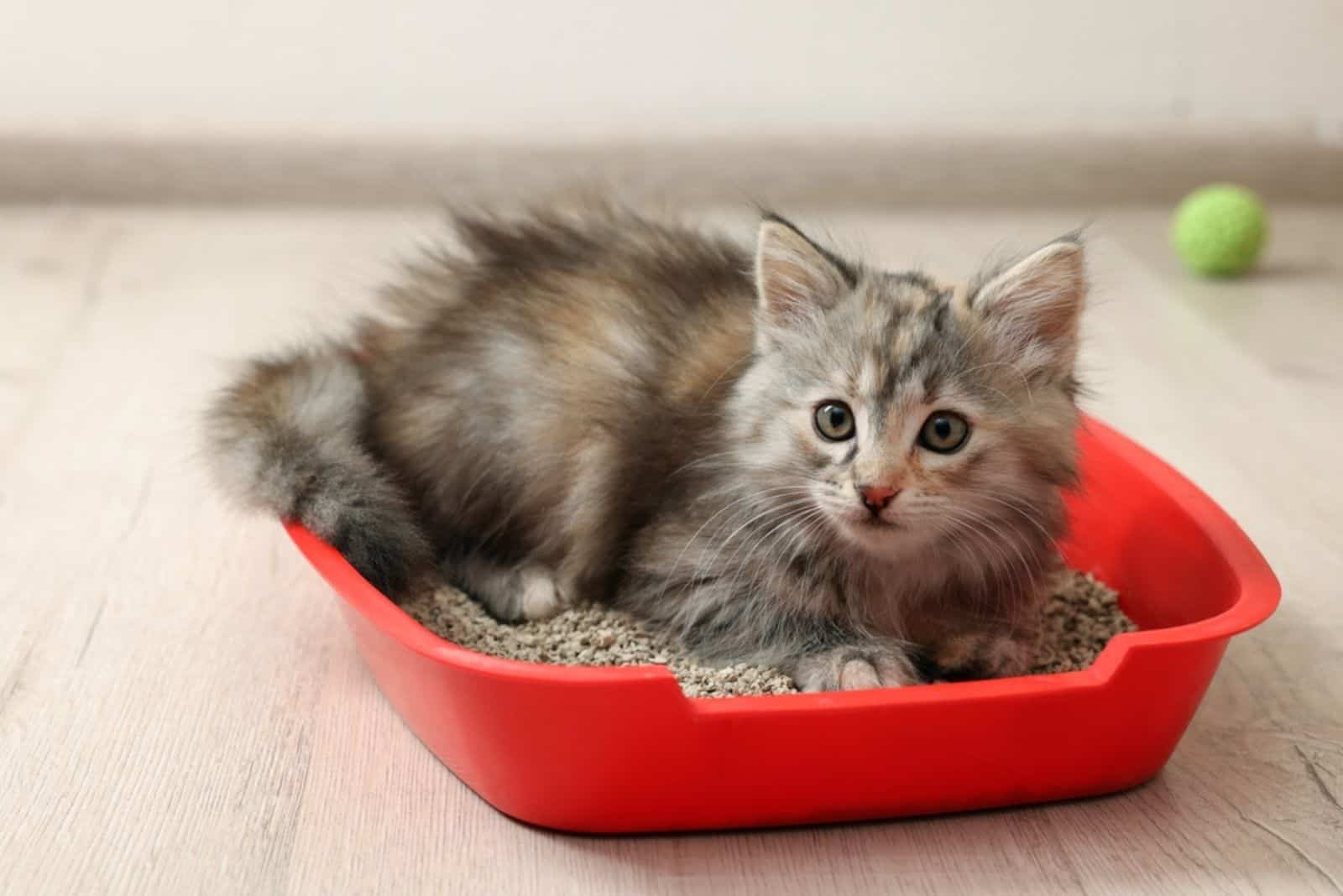
Many cat owners wonder the same things; which food is the best, what type of litter they should use, and how much litter to put in the litter box?
We all want to avoid any unwanted cat behavior, and we all want what’s best for our feline friends. That is why I am sharing this brief guide with all the info about cat litter that you might need.
I have six cats of my own, so I’m pretty experienced when it comes to litter box situations! Let’s have a look at how much litter to put in the litter box and how to avoid common problems with it.
Exactly How Much Litter To Put In Litter Box?
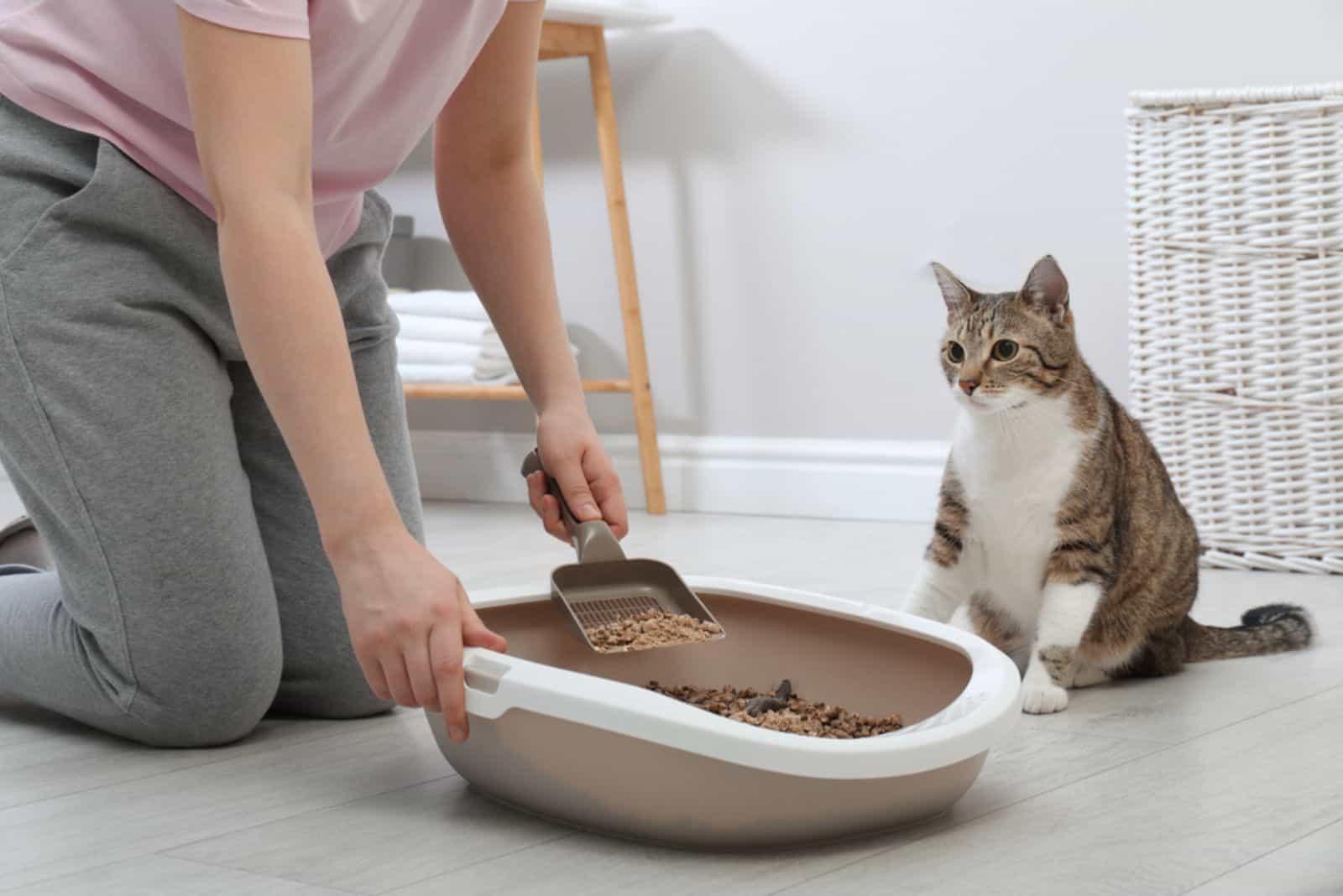
The recommended quantity for most cats depends on the size of the litter box. The best depth is just 2 to 3 inches of litter in the litter box. This is the perfect amount for your cat to use comfortably.
This way, your cat will have enough litter to dig in and enough litter to cover anything up. Of course, every cat is different so you may find you need to adjust the litter an inch up or down.
Your feline friend will surely let you know if you use too little or too much litter. If you think your cat is having trouble using the litter box, keep an eye on it, and be sure to consult your veterinarian if you have any concerns.
If you have multiple cats, don’t make the mistake of simply filling the litter box up, thinking that one litter box will do for both cats. Instead, you have to buy more boxes.
Always have one additional box for the overall number of your furry friends. So, owning two cats means you need three litter boxes.
While scooping the litter box out daily, you should always sprinkle some fresh litter on top to keep the level of litter consistent.
Are You Using Enough Litter Or Too Much?
Cats need just the right amount of litter, not too little and not too much. You need enough litter to cover your cat’s excrement, but it’s very easy to overdo it.
If you use too much litter, your cat will probably let you know, either deliberately or accidentally! You may notice unwanted behavior, such as leaving the litter box instead of doing the business.
How can you determine if too much litter is the problem?
How To Know You’re Putting In Too Much Litter
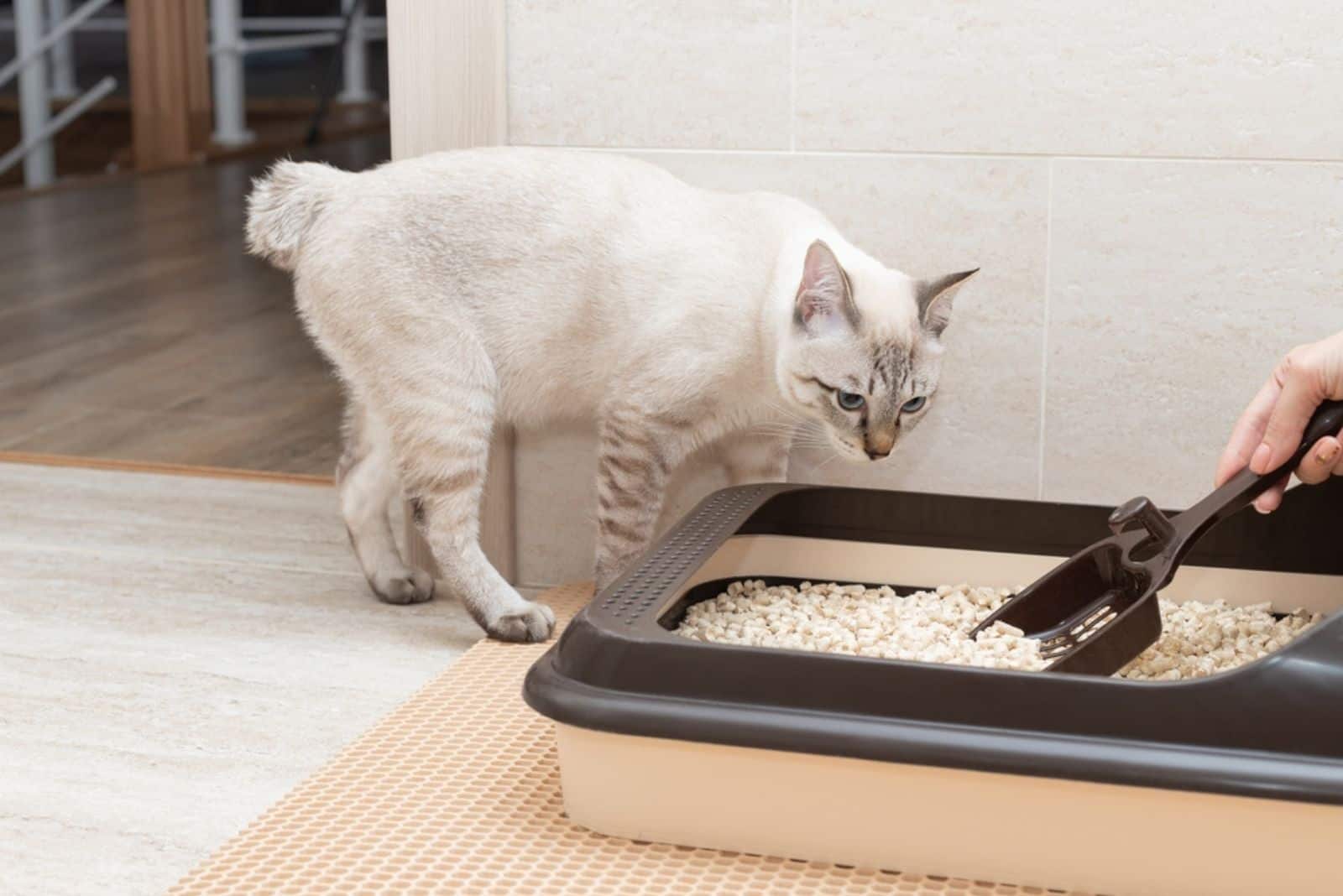
The following are the most common signs that your cat’s litter box is filled up with too much litter.
• Your cat isn’t stable in the litter box:
Take a closer look the next time your cat uses the box. They need to appear confident and calm. If your cat is unstable and unbalanced, you may have put in too much cat litter, and the litter is moving too much underneath them.
For your cat, this will feel like walking on a sandy beach; it is harder to control movement which isn’t ideal when it needs to use the litter box. This can be particularly problematic for older cats or those with physical or medical conditions.
• Your cat doesn’t completely enter the box:
If your cat doesn’t feel stable in its litter box, it will probably only go halfway in it. You may see your cat digging a hole with its front paws, but it will most likely go potty outside of the litter box.
If you are super lucky, your cat might turn around and pee or poop inside the box. This type of behavior can also be caused by a litter box that is too small, so make sure your cat has enough room to move and turn around.
• Your cat litters around the box:
All cats love to dig and it’s something they instinctively need to do when they pee or poop. If your cat gets a little overzealous and scatters litter outside the box, that might mean that there’s too much litter in the box.
This behavior may occur because the cat is able to dig too much, which makes it difficult for it to know when the hole is deep enough.
As a result, the cat starts frantically digging, and cat litter is often strewn around the room.
• You’re not scooping out but adding in the litter:
A clean layer of litter on top can make it seem like the cat’s litter box is clean, but it will more likely make matters even worse if you’re adding litter to cover the smell before you have the time for the next clean-up.
If you are using clumping litter, this will only contribute to the problem. Clay litters typically form hard, heavy clumps on the bottom and on the sides of the litter box, making the clean-up process even harder.
What could be the alternative to filling up the box and providing a clean litter box with fewer litter box odors? Maybe search for covered litter boxes or self-cleaning litter boxes, so you don’t need to worry about everyday clean-ups.
Why You Shouldn’t Use Too Little Litter Either
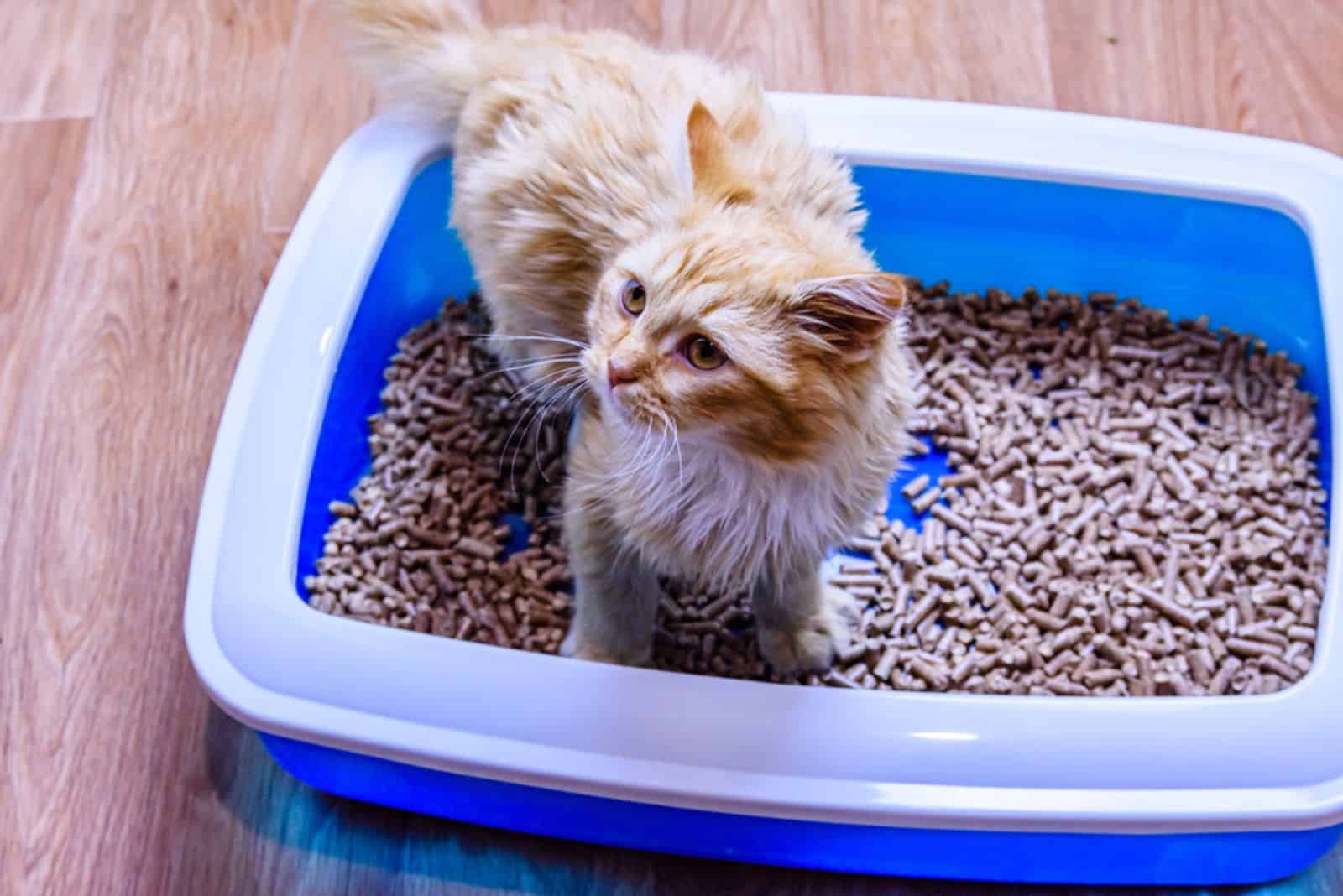
Too little litter in the cat’s box also poses a big problem. The most important thing is to ensure that your cats don’t avoid using the litter box.
This can cause unwanted behavioral problems but it can easily be avoided by creating a clean environment for your cat’s bathroom needs.
Another significant problem associated with not having enough litter in the box is the rapid development of foul odors.
Cat urine will be absorbed into the litter, but excess urine will remain at the bottom of the box if not enough litter is added and there’s nothing to cover it all up.
This can make it less appealing for your cat and force your cat to seek out new places to pee and poop.
Cats love digging holes for their waste and then covering it. If they feel like they don’t have enough litter, they might find another pooping spot. You can make it easier for your cat by putting in the right amount of litter every time.
Other Litter Box Mistakes You Should Avoid
The litter should be deep enough to absorb liquids and scents, so you need to opt for a 2 or 3-inch layer and only add more litter when you scoop some out.
We’ve covered the too much/too little issue, so now let’s check out what other things you need to watch out for with litter box maintenance.
1. Not Cleaning The Litter Box Regularly
Not cleaning the cat’s litter box regularly enough or not cleaning it as thoroughly as you should, is the most common reason your cat will avoid using it.
If your cat can still smell cat pee or feces in it, you’ll probably have some litter box problems on your hands.
The following is what a daily litter box clean-up should involve:
• scoop out all the solid pieces and clumps of litter
• throw it away in a safe manner
• clean the outside of the box
• wash the scoop
And the following should be done once a week:
• dispose of all used litter and empty the litter box
• clean the litter box with water and soap
• use cat-safe disinfectant to sanitize the box
• use plastic box liners (for easier clean-ups in the future)
• finally, fill the box with 2-3 inches of fresh new litter
Learn more: How To Get Rid Of Cat Litter Smell In Apartment
2. Wrong Location For The Litter Box
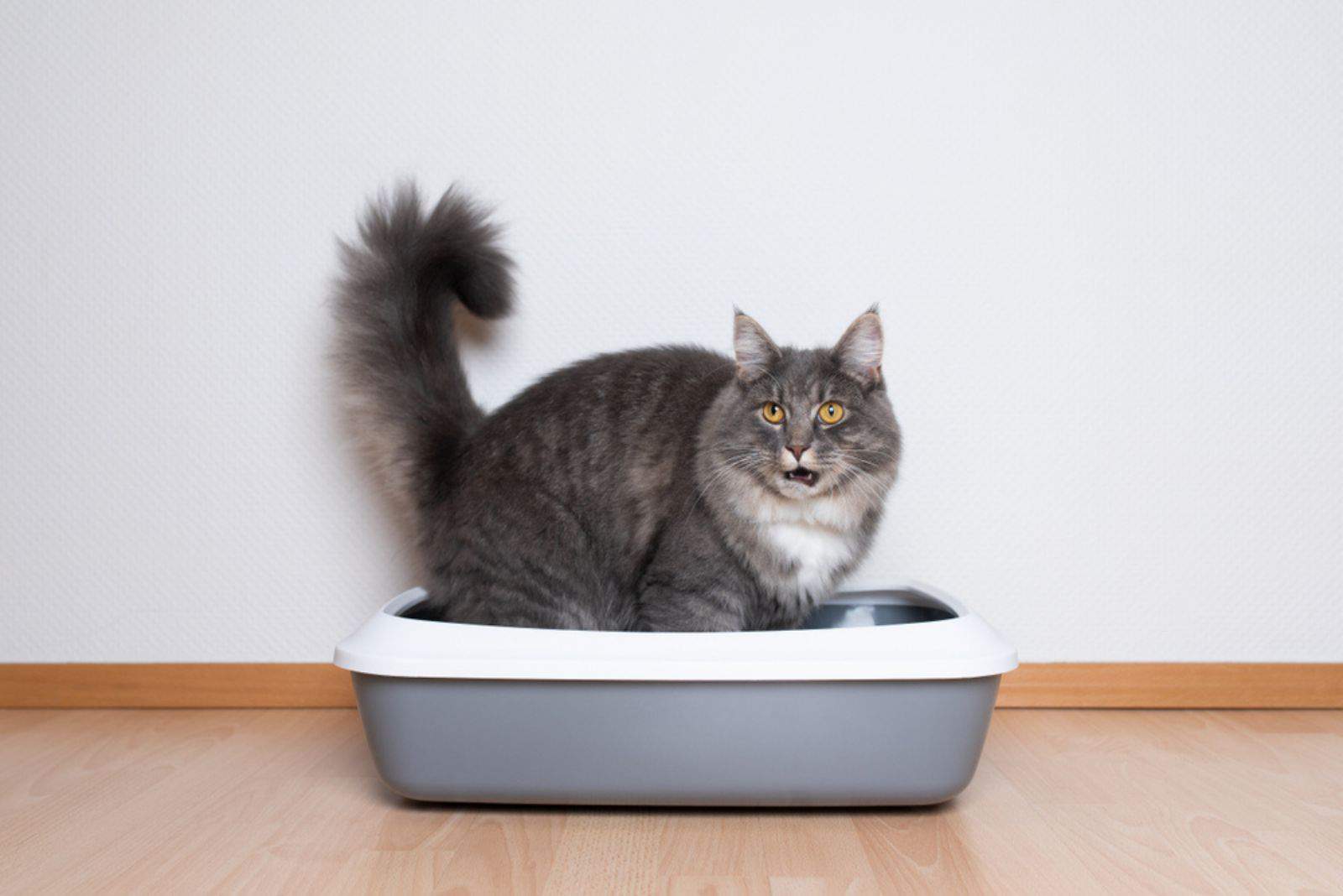
Getting the location wrong is quite a common litter box mistake. A good rule is to place the litter box in an easily accessible place in your home; it is best if this is a private, quiet area, such as a hallway or, even better, your bathroom.
If your house has several floors, put a litter box on each one of them. Also, always try to put the litter box as far away from the cat food or water as possible.
Finding the perfect spot for the cat’s toilet area can take some time. If your cat doesn’t particularly like using the litter box in its current location, try putting it somewhere else until your cat has accepted it.
3. Wrong Type Of Litter
In many cases, the problem is the litter type. Many cats prefer non-clumping litters that are fine-grained and don’t hurt their delicate paws.
Nowadays, a popular litter choice is to use wood pellets instead of regular cat litter; this absorbs urine and also helps control odors.
If you’re looking for biodegradable cat litter, you should definitely consider wood or pine pellets, recycled paper, tofu cat litter, wheat, and walnut hulls, all of which can be found on Amazon.
It all comes down to the individual cat. If you own more than one litter box (which you should), you can experiment with different types of litter in each one.
You’ll know right away which one your cat prefers as they will seek it out, and that will be the best cat litter to use going forward!
Check out: Pretty Litter Vs Kitty Poo Club: Which Cat Litter Is Better?
4. Wrong Type Of Litter Box
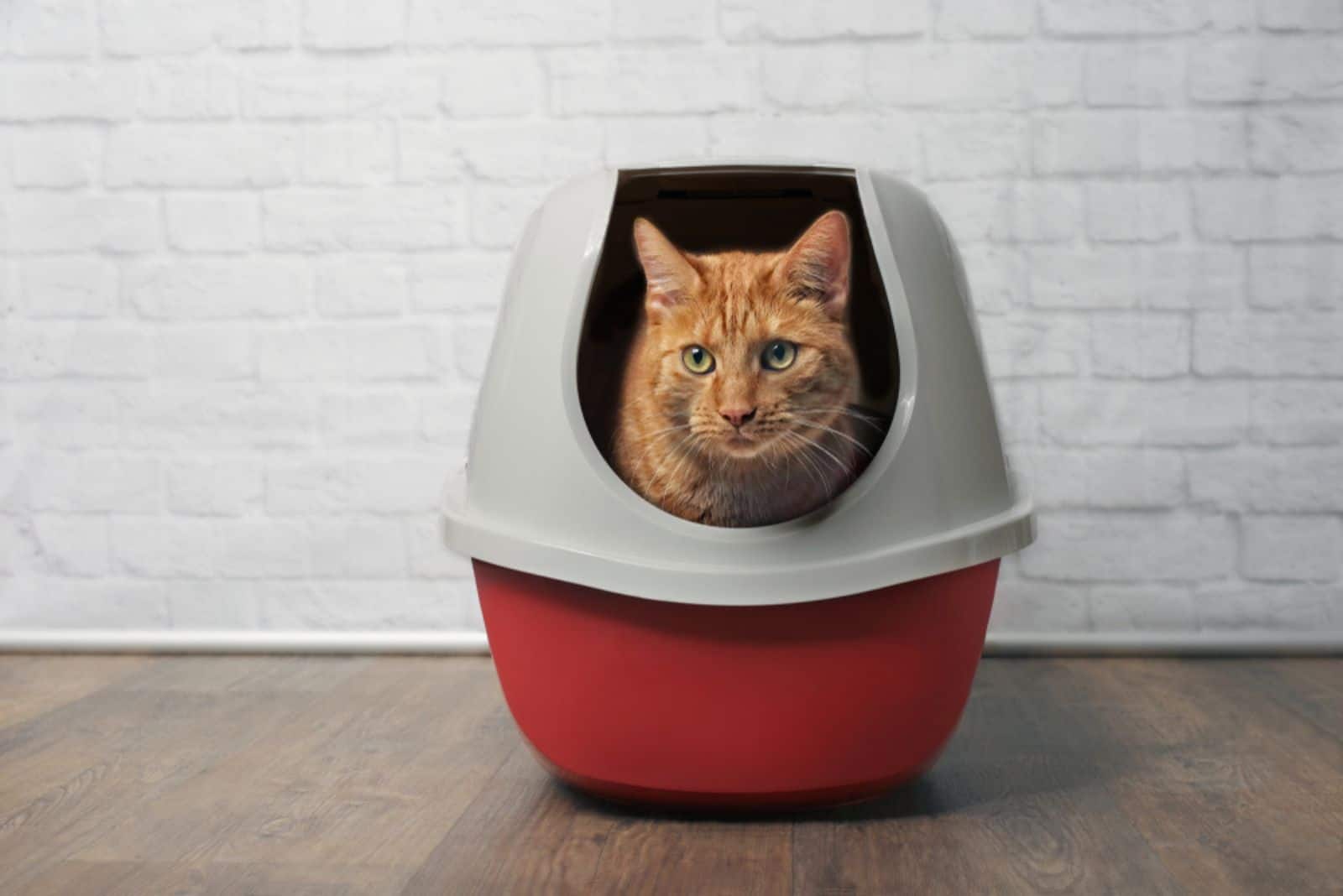
Cats are notoriously picky, so finding a suitable litter box can be tricky and it may require some time. Here are some useful tips to keep in mind when you are choosing a litter box for your cat.
First of all, consider your cat’s size. Your cat should be able to turn around easily while it’s in the litter box. If the litter box isn’t big enough, your cat will probably refuse to use it or even pee around it to let you know something isn’t right.
Then you need to choose the appropriate height. Most cats can easily enter and exit a litter box with half-height sides. However, older cats or cats with mobility issues may need a litter box with lower sides.
The number of cats and boxes is important; you need to provide, at the very least, one litter box for each cat, but preferably an additional box too. Cats are actually very private animals and they aren’t particularly happy to share their potty with the other cats in your house.
Again, the rule for litter boxes is one litter box per cat plus an additional one.
Postpone the upgrade! Accessories like covers, liners and self-cleaning devices may seem useful, but if your cat is content using the litter box as it is, then that’s great. You can always upgrade later if needed.
Learn more: 18 Best Alternative Cat Litter For Your Cat
5. A Stressed Cat
Stress may occur in cats for a variety of causes. Perhaps you’ve recently relocated to a new house, had a baby, or adopted a new cat.
These kinds of changes can cause stress or anxiety and this may disrupt your cat’s schedule and upset its habit of using the litter box.
You can help by ensuring that your cat has a secure and private place to go when they are anxious and/or stressed. A happy and relaxed cat is more inclined to use the litter box properly.
See also: Cat Peeing Over Edge Of Litter Box: 13 Reasons & Solutions
Final Words
You won’t be alone in wondering how much litter to put in your cat’s litter box. I think every cat parent has wondered about it, or wondered if they have got it wrong when they notice unusual litter box behavior in their cat!
The best depth for most cats is just two to three inches of litter, which is usually enough and ideal for your cat’s use. This way, your cat has enough litter to dig in and conceal anything, as their natural instinct tells them to.
However, bear in mind that every cat is different, and their size might vary by two pounds or more, so it’s good to monitor how the cat is getting on so you can see whether you need to modify the litter depth by an inch up or down.
I hope you’ve found this short article helpful and that you won’t have any more litter troubles in the future!


